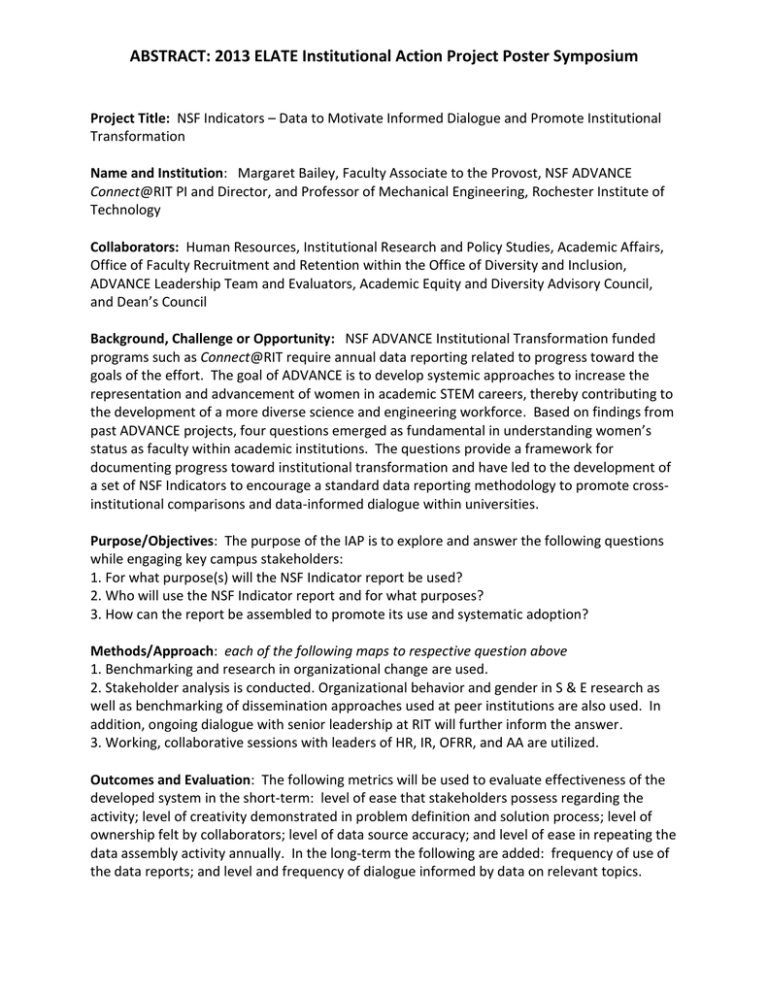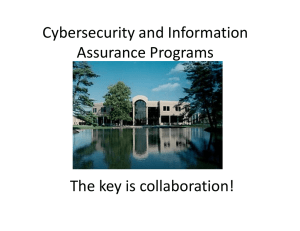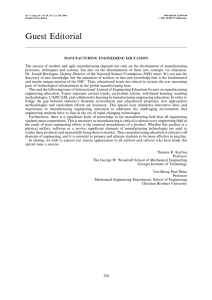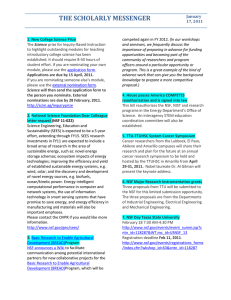ABSTRACT: 2013 ELATE Institutional Action Project Poster Symposium
advertisement

ABSTRACT: 2013 ELATE Institutional Action Project Poster Symposium Project Title: NSF Indicators – Data to Motivate Informed Dialogue and Promote Institutional Transformation Name and Institution: Margaret Bailey, Faculty Associate to the Provost, NSF ADVANCE Connect@RIT PI and Director, and Professor of Mechanical Engineering, Rochester Institute of Technology Collaborators: Human Resources, Institutional Research and Policy Studies, Academic Affairs, Office of Faculty Recruitment and Retention within the Office of Diversity and Inclusion, ADVANCE Leadership Team and Evaluators, Academic Equity and Diversity Advisory Council, and Dean’s Council Background, Challenge or Opportunity: NSF ADVANCE Institutional Transformation funded programs such as Connect@RIT require annual data reporting related to progress toward the goals of the effort. The goal of ADVANCE is to develop systemic approaches to increase the representation and advancement of women in academic STEM careers, thereby contributing to the development of a more diverse science and engineering workforce. Based on findings from past ADVANCE projects, four questions emerged as fundamental in understanding women’s status as faculty within academic institutions. The questions provide a framework for documenting progress toward institutional transformation and have led to the development of a set of NSF Indicators to encourage a standard data reporting methodology to promote crossinstitutional comparisons and data-informed dialogue within universities. Purpose/Objectives: The purpose of the IAP is to explore and answer the following questions while engaging key campus stakeholders: 1. For what purpose(s) will the NSF Indicator report be used? 2. Who will use the NSF Indicator report and for what purposes? 3. How can the report be assembled to promote its use and systematic adoption? Methods/Approach: each of the following maps to respective question above 1. Benchmarking and research in organizational change are used. 2. Stakeholder analysis is conducted. Organizational behavior and gender in S & E research as well as benchmarking of dissemination approaches used at peer institutions are also used. In addition, ongoing dialogue with senior leadership at RIT will further inform the answer. 3. Working, collaborative sessions with leaders of HR, IR, OFRR, and AA are utilized. Outcomes and Evaluation: The following metrics will be used to evaluate effectiveness of the developed system in the short-term: level of ease that stakeholders possess regarding the activity; level of creativity demonstrated in problem definition and solution process; level of ownership felt by collaborators; level of data source accuracy; and level of ease in repeating the data assembly activity annually. In the long-term the following are added: frequency of use of the data reports; and level and frequency of dialogue informed by data on relevant topics.







